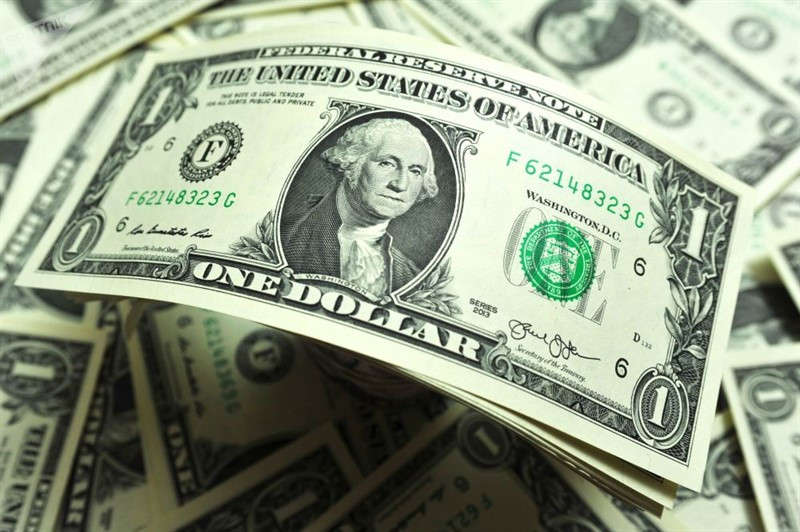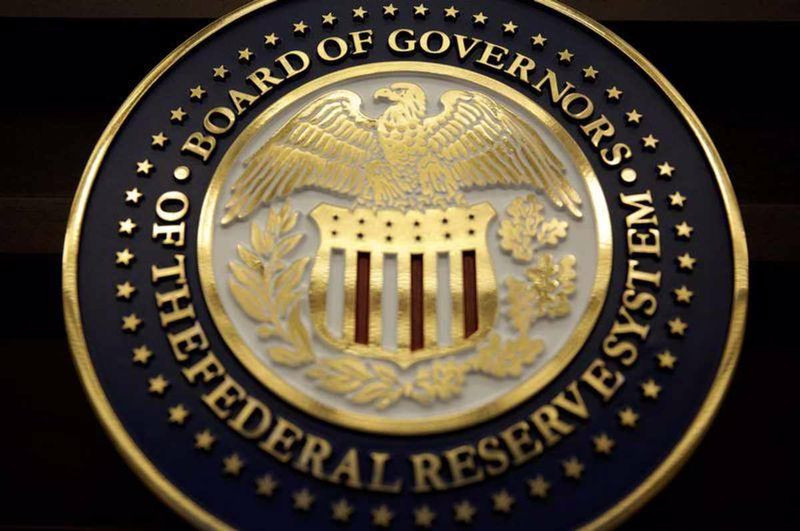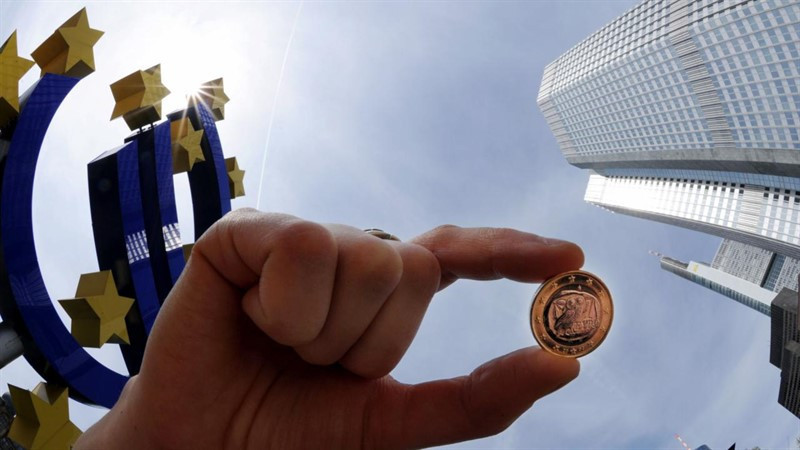
The US dollar is now the main reserve currency of the world. However, some analysts say that the use of USD as a financial weapon will only accelerate the movement already begun by many countries to diversify investments into alternative currencies.
"The more we use the dollar in this way, the more other countries will diversify for geopolitical reasons," analysts from the American Council on Foreign Relations said.
Although the greenback is unlikely to be replaced as a reserve currency in the near future, any sustained rejection of the USD could lead to a more fragmented global economy, where payments will be more evenly distributed between currencies, including the dollar, euro and yuan, analysts say.
"The depreciation of the US dollar is the end result of turning the US currency into a weapon in a new era of sanctions," Bank of America analysts warn.
Despite the threat of the dollar's dominance, it will be extremely difficult to find a worthy replacement, according to strategists at JPMorgan Asset Management.
According to them, the size and strength of the world's largest economy is second to none, US Treasury bonds are still one of the safest ways to store money, and the dollar remains the main beneficiary of capital inflows to the United States.
"You can buy the yen, the euro or the Australian dollar to diversify, but I don't think they can really replace the dollar as a reserve. The United States remains the dominant power in the global economic arena," JPMorgan Asset Management said.
Brandywine analysts agree with them.
"Can we think of any country right now that matches the US economy, military might and their vast markets? No, we can't. We are not at the stage where the dollar can be challenged," they said.
While the talk about the decline of the reserve status of the US currency continues, it is still staying near the peak levels of almost two years ago.
The greenback started the new week on a positive note, having risen in price against its main competitors by more than 0.2%. The day before, the USD index rose to 99.35 points, but then adjusted to 99.10 points.
A number of factors contributed to the strengthening of the dollar.
Thus, the markets are still more inclined to expect an increase in the Fed's key rate by 50 basis points at once, rather than 25, as it was after the last FOMC meeting. The probability of this step is now estimated at 72%. The increase in the discount rate of the central bank is known to be positive for the national currency.

The dollar also rose due to the high yield of US Treasury government bonds. Yesterday, during the course of trading, the yield of ten-year treasuries rose above 2.55% for the first time since May 2019. The indicator has been growing for the fourth consecutive month: since the beginning of March, it has increased by almost 30%, to 2.44% from 1.82%.
However, already on Tuesday, the US currency was forced to go on the defensive after four consecutive days of growth amid the resumption of some buying interest in the risk-related space.
Support for riskier assets seems to have been revived in the form of new hopes for the next round of peace talks between Russia and Ukraine, which started today in Turkey.
Following the results of the first day of negotiations, the head of the Russian delegation, Vladimir Medinsky, said that Russia would take "two steps" to de-escalate the conflict. The Russian Defense Ministry has promised to reduce military activity in the Kiev and Chernihiv directions.
The head of the Ukrainian delegation, David Arahamiya, in turn, said that a new system of security guarantees for Ukraine was discussed at the meeting. He specified that it would be an international ratifying treaty.
Taking advantage of the weakening of the dollar's positions and the improvement in market sentiment, the EUR/USD pair jumped by almost 150 points to 1.1130 on Tuesday, after touching the lowest level in two weeks at 1.0945 a day earlier.
The greenback lost the points scored the day before, dropping below 99.00. He increased his losses after the release of encouraging news from the geopolitical front.
In case of strengthening of the bearish momentum, the key support at the level of 98.00 will come into play, the breakdown of which is capable of taking the US currency to the weekly lows of March 17 in the area of 97.70.
At the same time, the constructive forecast for USD is still well supported by the prospects of increased inflation, a potentially more aggressive position of the Fed and higher yields in the United States.
The dollar will remain positive on the short-term horizon while trading above the 6-month support line of about 96.10.
ING economists continue to note the upward risks for the US currency.
"The Fed's openness to raising rates by 50 bps has clearly increased the potential for strengthening the greenback, and this space has been filled only slightly so far, so even if expectations for rates do not rise further, Forex eventually still has something to catch up, and we still note that the balance of risks for the dollar is shifted towards the upward. We expect that USD will continue to rise in the direction of 100.00," they said.
According to experts, the fundamental background, highlighted by the divergence in policy between the Federal Reserve and the European Central Bank, should continue to favor the dollar against the euro, suggesting that attempts to restore the EUR/USD pair are likely to remain technical in the near future.

The single currency is suffering from a jump in energy prices in the EU and remains hostage to ECB policy. The central bank cannot respond to the surge in inflation by raising the key rate, as this will only increase the stagflationary risks for the economy. In addition, the threat of stopping gas exports from Russia hangs over Europe, which could have disastrous consequences.
European politicians declare a potential rejection of Russian gas, but there are not so many opportunities to replace the supply of blue fuel.
According to some estimates, other suppliers will be able to replace no more than a third of the Russian volume – about 70 billion cubic meters, while the rest will remain in short supply.
At the same time, gas prices will remain high, especially in light of the minimum reserves and the need to replenish them by next winter.
As long as the conflict in Ukraine continues and the risk of further sanctions remains in force, the ECB may have difficulty demonstrating a more hawkish attitude due to economic problems, analysts at Commerzbank say.
"As long as the ECB continues to seem rather indecisive compared to a number of other central banks, this is unlikely to help the euro much," they said.
The peace talks between Russia and Ukraine offer some support for the euro. Nevertheless, it will be necessary to see further optimism in this direction in order to keep the EUR/USD pair afloat, given the pressure exerted on it by rising yields in the US, ING strategists note.
"We still note the risks of a decline in EUR/USD in the near future, even if the peace talks will give some temporary respite. We still expect a break below 1.0900 in the near future," they said.
Scotiabank expects the euro to weaken against the US dollar to $1.08 in the coming months, and this is likely to happen after the next ECB meeting.
"A surge in inflation will prompt the hawks in the ECB Governing Council to insist on raising rates this year, but the central bank is unlikely to dramatically change its tune at a meeting in mid–April, given the continuing downside risks to the eurozone economy from high commodity prices," the bank's analysts noted.
"We remain skeptical that the euro can continue to grow before or after the April ECB meeting, since market expectations of two rate hikes in the eurozone this year are already at a high, and there is plenty of room for disappointment," they added.
The high level of economic uncertainty in the light of the additional negative shock from the conflict in Ukraine not only put the ECB in front of a difficult choice, but also forced the Bank of England to soften its forecasts on rates.

"We believe that it will be difficult for the GBP to strengthen its position against the US dollar, while the reassessment of expectations on rates will put pressure on it," Scotiabank economists said.
Before the start of Russia's special operation in Ukraine, it seemed that the pound could well compete with the dollar in 2022, since the Bank of England began raising the rate earlier than the Fed, and was going to actively raise it further this year.
Following the results of the March meeting, the central bank raised the key interest rate by 0.25%. At the same time, the bank noted the presence of risks for further interest rate hikes. According to the management of the Financial Institute, it will depend on how the medium-term prospects for inflation will develop.
"We believe that the shadow cast by the March meeting of the Bank of England on the GBP will persist in the coming weeks, especially if the members of the Bank of England continue their "dovish" refrain," HSBC analysts said.
They expect the Bank of England to implement three more rate hikes of 25 bps this year.
Meanwhile, the futures market is pricing in a more aggressive Fed rate hike with a couple of increases of 50 bps over the next three FOMC meetings.
"The increase in energy prices, along with other inflationary factors, suggests that inflation in the UK will be about 8% by the end of 2022, and we expect the Bank of England to raise the rate by 25 bps at each of the next three meetings, bringing it to 1.50% this year. Nevertheless, this remains a much more dovish forecast than market expectations. Thus, the risks for the GBP are shifted towards the downside," HSBC reported.
Less than expected damage from the conflict in Ukraine may be positive for the pound, but even before the conflict, the Bank of England is unlikely to meet the high expectations of the market, Scotiabank analysts said.
"If all goes well, the GBP/USD pair may target 1.3400, but growth beyond this level looks limited, while a retest of 1.3000 and a fall to 1.2800 seems more likely," they said.
The greenback can strengthen not only in relation to its European counterparts, who find themselves in the epicenter of the energy and geopolitical crisis, but also to other traditional defensive assets, such as the yen and the franc.

Since the beginning of the year, the USD/JPY pair has grown by more than 6%, and almost all of this growth occurred in March.
The weakening of the Japanese currency occurred both against the background of rising oil and natural gas prices due to the military conflict in Ukraine, since Japan is an active importer of energy carriers, and against the background of the position of the Bank of Japan.
On Monday, the central bank bought bonds worth just over $500 million and promised three more days of unlimited purchases to protect its 10-year yield target of 0.25%.
This move, which demonstrated the Bank of Japan's determination to maintain an extremely soft monetary policy, highlighted a striking contrast with the increasingly hawkish sound of the Fed and threw the already sliding yen off a cliff.
The day before, the Japanese currency fell to 125.10 yen per dollar, the lowest since August 2015, before recovering to 122.70 on Tuesday.
The minutes from the March meeting of the Bank of Japan, published today, showed that policymakers emphasize the need to maintain extremely loose monetary policy, even though some of them have seen signs of growing inflationary pressures.
The Bank of Japan is trying to limit the growth in the yields of its debt securities, while globally yields are rising following treasuries. The rate differential can change even more noticeably in favor of the weakening of the yen. Therefore, there is reason to believe that in the future we may see a retest by the USD/JPY pair of recent highs in the area of 125-126.
"Despite the subsequent sharp pullback of the USD/JPY pair from a six-year high, the dollar rally still remains in force. However, it remains to be seen whether the pair will be able to gain a foothold above 125.10. The next resistance is another significant level at 125.85. Only a breakdown down 122.20 will indicate that the greenback rally that began a few weeks ago has come to an end," UOB strategists noted.
As for the franc, the central bank's position plays a decisive role in the dynamics of its quotes, as in the case of the yen.
Following the results of the meeting held last Thursday, the Swiss National Bank kept the key interest rate unchanged at -0.75%, confirming its commitment to a soft monetary policy.
At the same time, the bank's management again expressed its readiness to intervene in the foreign exchange market.
The Financial Institute believes that the franc exchange rate against the US dollar remains too high.
On the one hand, the Swiss currency retains the status of a safe haven asset, which supports demand for it, on the other hand, the threat of currency intervention, which the NBS says, acts as a strong deterrent to the strengthening of the franc.
In the event of a breakdown of the USD/CHF key resistance level at 0.9410, the 0.9460 and 0.9490 marks will come into play, and the pair will finally move into the bull market zone.
In an alternative scenario, the first signal for short positions will be a breakdown of support at 0.9320. Next, the pair may move to 0.9285 and 0.9260. However, even a decline to 0.9210 will still be considered a downward correction, while a breakdown of this level will indicate a return of USD/CHF to bearish territory.





















